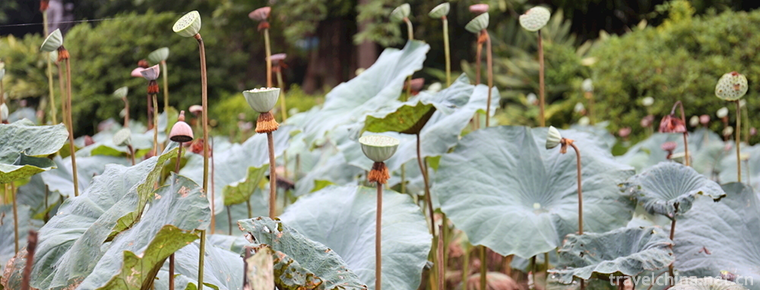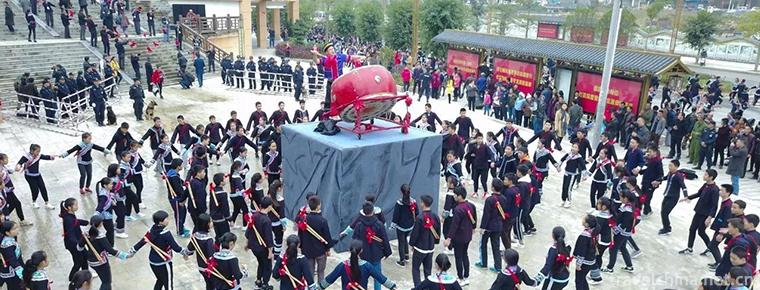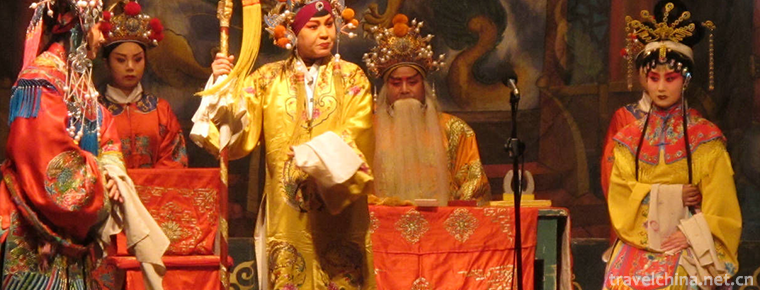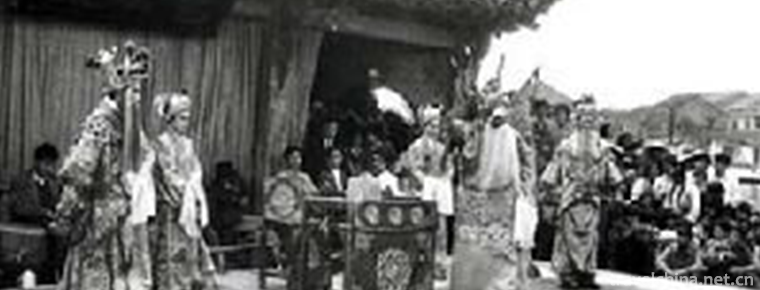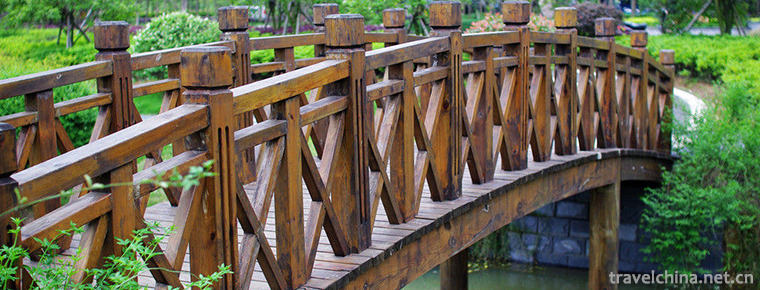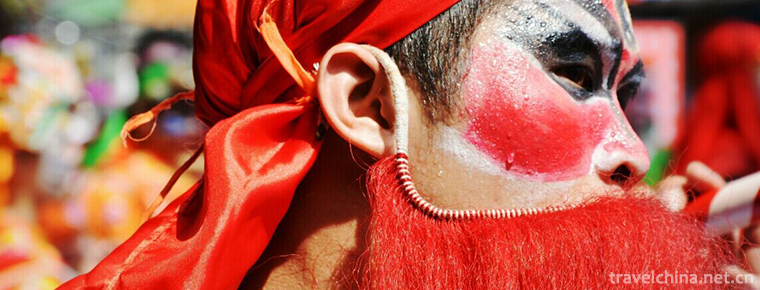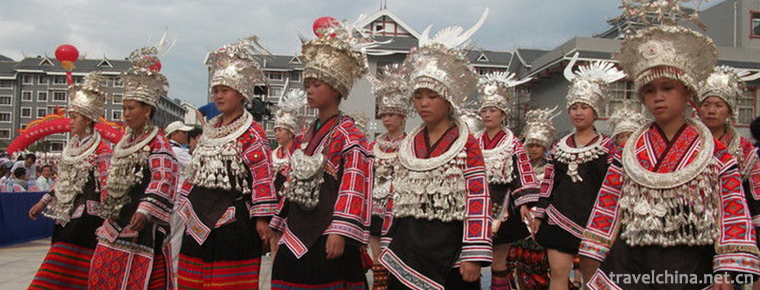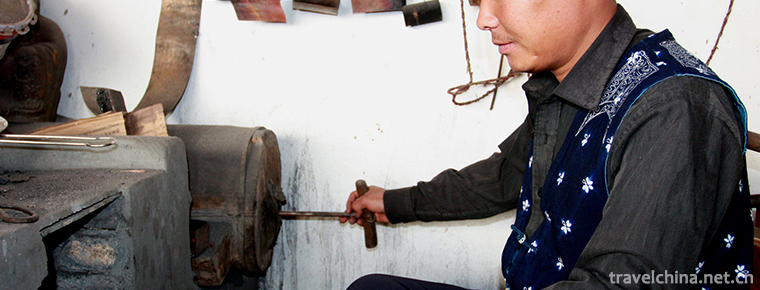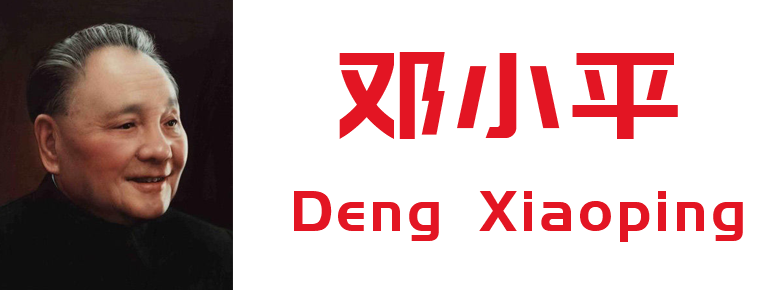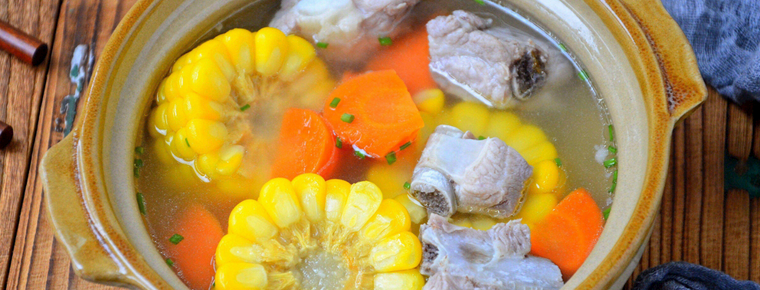Kun Opera
Kun Opera
Kunqu Opera, formerly known as "Kunshan Opera" or "Kunqu Opera" for short, is an ancient Chinese opera voice and opera, now also known as "Kunqu Opera". Kunqu Opera is one of the oldest traditional operas of the Han nationality. It is also a treasure of Chinese traditional culture and art, especially in opera art. It is called an "orchid" in a hundred gardens. Kunqu Opera originated in Kunshan, Suzhou, China, in the 14th century. It was improved by Wei Liangfu and others and went to the whole country. It has dominated the Chinese theatre for nearly 300 years since the mid-Ming Dynasty.
Kunqu Opera, which combines singing, reading, playing, dancing and martial arts, is known for its elegant dictionary, tactful tune and exquisite performance, and is known as the "ancestor of hundred operas". Kunqu Opera is composed of drums and panels to control the rhythm of singing, flute and three strings as the main accompaniment instruments, and its pronunciation is Zhongzhou Rhyme. Kunqu Opera was listed by UNESCO as "the representative works of human oral and intangible heritage" in 2001
In December 2018, the General Office of the Ministry of Education announced that Peking University was the base of inheritance of Kunqu traditional Chinese culture.
development history
Kunqu Opera, formerly known as "Kunshan Opera" and "Kunqu Opera", is an ancient Chinese opera voice and opera. It is also known as "Kunqu Opera". Kunqu Opera is one of the oldest traditional operas of the Han nationality. It is also a treasure of the traditional culture and art of the Han nationality, especially the opera art. It is called an "orchid" in a hundred gardens. The music of Han nationality in Ming Dynasty was mainly opera music. Southern Opera was called "Legend" in Ming Dynasty. After Ming Dynasty, the form of Zaju declined gradually. The music of Legend dominated the theatre and included Zaju music. It was renamed Kunqu Opera.
Kunqu Opera originated more than 600 years ago and was created by Gu Jian, a Kunshan native. During the Jiajing period of the Ming Dynasty, Wei Liangfu, an outstanding Kunqu musician and reformer, boldly reformed Kunshan Opera, absorbed the characteristics of Yuyao Opera, Yiyang Opera and Haiyan Opera, which were popular at that time, and formed a new voice, which was widely welcomed. Because this tone is soft and delicate, like glutinous rice soup dumplings made with water mill powder eaten by Jiangnan people, it has an interesting name, called "Shuimu Tune", which is today's Kunqu Opera.
During the Wanli period of the Ming Dynasty, Kunqu Opera developed in an explosive way, with a large number of excellent scripts emerging, and its performances were also very prosperous. According to records, there were thousands of professional performers in Kunqu Opera in Suzhou alone at that time. Today, there are seven Kunqu Opera Academy Troupes in the country, and the total number of practitioners is more than 1,000, which shows the prosperity of Kunqu Opera performance in that year. At that time, the occasions for performances were also varied: Kunqu Opera could be performed at home, in villas, in the countryside of Caotai, and even on the boats in the south of the Yangtze River. At one time, before the general trend, female family members were allowed to go out to watch the theatre. However, in order to avoid the discord of etiquette, a "women's platform" will be built, which only allows women to enter. In some large-scale performances, there is also a grand occasion of "more than ten thousand people shouting in unison", just like the current superstar concert. In addition to pink-and-ink performances, Kunqu solfeggio, which everyone can participate in regardless of age, occupation and class, is popular all over the country and constitutes a spectacular cultural phenomenon.
On May 18, 2001, UNESCO announced in Paris the first batch of "Mankind's Oral and intangible heritage representative works list", a total of 19 declaration items were selected, including Kunqu Opera Art of China, China became one of the 19 countries that won this honor for the first time.
As early as the late Yuan Dynasty (mid-14th century), Kunqu Opera originated in the Kunshan area of Suzhou. It is called the four major tunes of Ming Dynasty and belongs to the Southern Opera system, which originated from Haiyan Tune, Yuyao Tune and Yiyang Tune in Jiangxi Province.
Kunshan Opera began as a folk song and ditty, and its distribution area was limited to the area of Suzhou. By the end of the Wanli period, Suzhou was taken as the center and extended to the south of the Yangtze River and the north of the Qiantang River. In the end of the Wanli period, it also flowed into Beijing. In this way, Kunshan Opera became the most influential opera from the middle of Ming Dynasty to the middle of Qing Dynasty.
Kunqu Opera is the most influential voice opera from the mid-Ming Dynasty to the mid-Qing Dynasty. Many operas are developed on the basis of Kunqu Opera. They are known as "the ancestor of Baiqu Opera, the master of Baiqu Opera", and have the nickname "the mother of Chinese Opera". Instantly, Wuxi Kunqu Opera Society has played a role in promoting Kunqu Opera prosperously. Kunqu Opera is the most complete performing system in the history of Chinese opera. It has a deep foundation and rich heritage. It is the result of the high development of Chinese traditional culture and art. It occupies an important position in the history of Chinese literature, opera, music and dance.
The performance of Kunqu Opera also has its unique system and style. Its greatest feature is its strong lyricism, delicate movements, skillful and harmonious combination of singing and dancing. In terms of language, the opera was originally divided into Nanqu and Beiqu: Suzhou vernacular is the main style in Nankun and Beijing vernacular is the main style in Beikun.
Kunqu opera has gorgeous and graceful singing, elegant reading, delicate performance, elegant dance, and perfect stage setting. It can be said that it has reached the highest level in all aspects of opera performance. For this reason, many local operas, such as Jin Opera, Pu Opera, Hunan Opera, Sichuan Opera, Gan Opera, Gui Opera, Yueju Opera and Fujian Opera, have been nurtured and nurtured by Kun Opera in many ways.
Many plays in Kunqu Opera, such as Peony Pavilion, Changshengdian and Peach Blossom Fan, are immortal works in ancient opera literature. Kunqu opera inherits the literary traditions of Tang poetry, Song Ci and Yuan Qu, while Qupai is much the same as Song Ci and Yuan Qu. This laid a good cultural foundation for the development of Kunqu Opera, and also created a large number of Kunqu Opera writers and musicians. Among them, Liang Chenyu, Tang Xianzu, Hong Sheng, Kong Shangren, Li Yu, Li Yu and Yeya are outstanding representatives in the history of Chinese opera and literature.
Looking from the historical development of Kunqu Opera, 400 years before the 18th century was the period when Kunqu Opera gradually matured and became more and more prosperous. During this period, Kunqu Opera has been showing people all kinds of Customs in a perfect way. It is this magnificent and beautiful performing atmosphere and the deliberate pursuit of subordinate elegance that make Kunqu Opera increasingly elegant and difficult. In the late 18th century, local operas began to rise. Their appearance broke the long-standing performance pattern. The development of local operas also transited from aristocracy to popularity, and Kunqu opera began to decline.
In the mid-20th century, the decline of Kunqu Opera became more evident. Many Kunqu artists turned to perform popular Peking Opera. Since the founding of New China in 1949, Kunqu Opera has been rejuvenated by vigorously supporting and revitalizing the cause of traditional Chinese opera. In 1956, the "Fifteenth Session" adapted and performed by Zhejiang Kunqu Opera Troupe had a wide impact in the country. Premier Zhou Enlai once said with emotion, "A play saves a play." After that, Kunqu Opera Troupe was restored in many parts of the country.
On May 18, 2001, UNESCO announced in Paris the first batch of "representative works of human oral and intangible heritage", including Kunqu Opera Art of China, which became one of the 19 countries that won this honor for the first time.
In the Jin and Yuan Dynasties, Zaju appeared in the north at that time, with many role-playing stories. Opera in the South originated around Jianyan Nandu. During the reign of Emperor Taizu Hongwu of the Ming Dynasty, the Southern Opera Wenjiabei Zaju became a legend.
According to Wen Zhengming's manuscript, Wei Liangfu, Loujiang, wrote in The Correction of Southern Ci, "Gujian in Yuan Dynasty was skilled in Southern Ci and was good at making ancient fu, although he was thirty miles away from Kunshan and lived in Qiandun (now Qiandongdeng Town). Timur listened to his good song, and he persevered. In the late Yuan Dynasty, Gu Jian of Kunshan was the founder of Kunqu Opera. There is Gu Jian Memorial Hall in Qiandeng Town of Kunshan today. Kunshan Opera in Ming Dynasty is one of the four major opera tunes. At the end of Yuan Dynasty, when Nanxi Opera was introduced to Kunshan area, it combined with local folk tunes and formed a local characteristic voice, which was greatly promoted by Gu Jian, a musician. According to Zhou Xuanzhong's Jinglin Sequel, Zhu Yuanzhang, the Taizu of the Ming Dynasty, also noticed Kunqu Opera, which was quite large at that time. During the reign of Zhengde and Jiajing in Ming Dynasty, Wei Liangfu, a singer of Qing Dynasty, inherited the tradition of "cultural music" from ancient times, improved Kunshan tune, adopted Zhongzhou rhyme system, and performed the tune according to the words, "calling water mill, patting cold plate", which made Kun tune exquisite and tactful, because of which it was also known as "water mill tune" and "water mill tune". Later, some new legendary works such as Yuyu Ji, Mingfeng Ji and Huan Ya Ji appeared, which were sung in Kun Opera. The new tune became popular in the north and south of the Yangtze River and became a leading opera tune. During the period from Wanli in Ming Dynasty to Qianlong in Qing Dynasty, more than one hundred years ago, Kunqu Opera was in its prime. The stage art of Kunqu Opera also developed and matured in the middle of Qing Dynasty. Following the rise of Flower Department, the elegant department represented by Kun Opera gradually withdrew from the stage. However, its voice and performing arts had a profound impact on later operas, such as Beijing Opera. The folk music club's singing activities also continued and became the main force to preserve the singing standards.
Flower Department is also known as "random bullet", according to Volume 5 of "Yangzhou Painting Records", especially "random bullet" to collectively refer to the various tones of flower Department can be known. Xu Fuming pointed out in his article "Random Talk and Random Talk" that "Random Talk" is also known as "Luan Tan", "Random Talk" and "Random Talk". The music style used in flower tune plays is more lively and noisy.
Origin formation
Kunqu Opera is a new style of drama which appeared in the Ming Dynasty of China. Since the late 16th century, it has gradually occupied the central position in the theatre and become the most important form of drama for more than 200 years. Kunqu Opera has undergone a long process from its origin to its formal formation.
According to the information we can see, during the period of Emperor Guangzong of Southern Song Dynasty, a local opera in Yongjia, Zhejiang Province, rose rapidly. It was mainly composed of southern folk music, so it was called Southern Opera. Nanxi Opera retains many characteristics of folk art, is not subject to any rules and regulations, and its performance is free and lively, with greater randomness. In the process of development, Nanxi Opera gradually absorbed various mature traditional music forms since Tang and Song Dynasties, and gradually became rich and detailed. However, due to the lack of upper intellectuals'participation, it was unable to overcome its congenital or acquired defects for a while, so that it lingered at a low level for a long time.
In the early Ming Dynasty, Nanxi Opera, on the one hand, drew valuable artistic experience from operas sung in northern tunes, on the other hand, attracted some intellectual elites to join in, showing a brand-new face. Zhu Yuanzhang, the founding emperor of the Ming Dynasty, read Gaoming (? 1359) After compiling the Southern Drama Book Pipa Ji, it was highly praised and specially asked people to rehearse in the court. It can be seen that the early Ming Dynasty Southern Opera has begun to move towards a more elegant artistic realm, which has been positively affirmed by the upper class.
The reason why Nanxi Opera can make such rapid progress is closely related to its own flexibility, which is embodied in the multiplication and change of its singing tunes. From the Southern Song Dynasty to the Ming Dynasty, Nanxi Opera was constantly combined with local dialects and folk music, and developed many different styles of local tunes. Kunshan Opera is the predecessor of Kunqu Opera, which is formed by the combination of Kunshan local music and Wu dialect. It must be noted that Kunshan Opera was only a form of solo music at that time, and had not yet been used to perform a complete drama plot. Before the mid-Ming Dynasty, Kunshan Opera was not very popular, but only in Suzhou. At that time, Suzhou was the leading metropolis in the southeastern region in terms of economy and culture. The prosperity of economy has led to the development of culture and art. Under this background, Kunqu Opera has come to the center of the social and cultural stage.
It is Wei Liangfu, a folk musician, who has developed the artistic potential of Kunqu Opera and made it an important singing form. Like many outstanding folk artists in Chinese history, Wei Liangfu's life record is very brief. According to some materials in his works, he lived in Jiajing and Longqing in Ming Dynasty. He was originally from Yuzhang, Jiangxi Province. He lived in Taicang for a long time and took folk tunes as his profession. Through comparative study, Wei Liangfu became increasingly dissatisfied with the fact that Kunshan tunes were straight and simple, lacking fluctuations and changes. He worked closely with a group of artistic comrades and began a comprehensive reform of Kunshan tunes.
This reform is carried out in two aspects: singing and accompaniment. Wei Liangfu and other folk musicians, on the basis of the original Kunshan tune, collected the advantages of various tunes in the South and the north, and at the same time drew lessons from Jiangnan folk song minor music, integrated a new type of tune which was different from the past. While singing, they paid attention to making the tune of the lyrics match with the tune, at the same time prolonging the syllable of the words, resulting in a soothing rhythm, giving people a special musical aesthetic feeling, which is spread. Kunqu Opera of later generations. Wei Liangfu is good at singing, but not at musical instruments. In the process of reforming Kunshan Opera, he was greatly helped by Zhang Yetang, a native of Hebei Province, whose birth and death date is unknown. Zhang Yetang assisted Wei Liangfu to absorb the northern tunes into the southern Kunqu Opera. Meanwhile, he reformed the three strings of the accompaniment instrument of the original northern tunes, and used it in the accompaniment of Kunqu Opera together with other instruments, such as Xiao, flute, clapper, pipa, Gong and drum, so as to make the tune euphemistic, delicate and fluent, which is called "Shuimmo Tune".
The success of Kunqu opera reform has brought Wei Liangfu great reputation. Once this new tune came out, it immediately conquered the audience with irresistible artistic charm. A group of folk musicians have learned Kunqu opera singing skills from Wei Liangfu, making this beautiful melody spread quickly in the surrounding areas. The earliest dramas performed in Kunqu opera form are generally regarded as "The Story of Raccoon Yarn" by Liang Chenyu, a Kunshan man (about 1521-about 1594).
The beauty of Kunqu Opera is, more importantly, the depth of its thoughts and feelings, and the beauty of its aesthetic interest. Love is the eternal theme of Kunqu Opera. The best thing on stage is to talk about love. But there are many clever differences between these love stories.
After Wei Liangfu's reform and Liang Chenyu's artistic practice, Kunqu Opera's influence became more and more important, and soon spread to a large area of Jiangsu and Zhejiang, becoming the main theatrical form in these areas.
Thriving
During the initial formation of Kunqu Opera, folk artists played a key role. After Kunqu Opera acquired a more complete form of drama, it began to develop to a higher level. At that time, many first-class writers and scholars came in and wrote a large number of plays with exquisite poems and vivid stories. During the same period when Liang Chenyu wrote The Story of Racoon Yarn, two other works with the same tremendous influence emerged in the field of drama in the Ming Dynasty, namely, The Story of Swords by Li Kaixian (1502-1568) and Ming Feng Ji by Anonymous. They were not originally created for the performance of Kunqu Opera, but later changed to Kunqu Opera and became an important repertoire of Kunqu Opera.
The dramas such as The Story of Ram Yarn, The Story of Sword and Ming Feng mainly focus on political themes, while other dramas before and after, such as Xu Lin's Embroidered Inscriptions (1462-1538) and Gao Lian's Jade Hang Ji (unknown birth and death years), etc.
It mainly centers on the theme of love. Since then, politics and love have become two major themes in Kunqu operas, sometimes independently and sometimes closely combined.
About the Wanli period in the late Ming Dynasty, Tang Xianzu (1550-1616), another great dramatist in the history of Kunqu Opera, was born. He was 15 years older than Shakespeare (1564-1616), the great British dramatist, and both died in the same year. Tang Xianzu's "Peony Pavilion" boldly brought the girl's love fantasy onto the stage, once performed, it immediately caused a great sensation. When Shakespeare's Midsummer Night Dream won laughter at the London Theatre in the Elizabethan era, the mysterious and beautiful dream in the Peony Pavilion in China's rich gentry's family performance venues or folk open-air theatres was also making people intoxicated. "Peony Pavilion" breaks through the conflict between reason and reason in traditional Chinese ethics and morality, trying to pursue an ideal love concept of "where love comes from", "the living can die, the dead can live".
There was another Kunqu opera writer in the Ming Dynasty who had the same important position as Tang Xianzu. His name was Shen Jung (1553-1610), a native of Wujiang, Jiangsu Province. Shen Jung is obviously not as fierce as Tang Xianzu. His thought is more orthodox and conservative. He takes a fully positive attitude towards the current social system. This attitude is very obvious in his Kunqu operas. From the point of view of artistic practice, Shen Jing's Kunqu Opera creation pays attention to the artistic characteristics of the drama itself, and provides the playwrights at that time and later generations with normative samples suitable for stage performance, which has its own positive significance that can not be erased.
Shen Jung's Chivalry is based on the story of Wu Song in Water Margin. It objectively reflects the social reality of rampant adultery, judicial disorder and corruption of the law by the government. It believes that these are the concrete manifestations of moral corruption, and that Wusong's struggle against hooligans and bullies is a justifiable act worthy of affirmation. The end of the play shows that only by consciously maintaining the normal social order centered on the emperor can the moral standards destroyed by the minority be restored. Shen Jung, with his own artistic ideas, led and influenced a group of playwrights in the same area, and formed a group of Wujiang School writers in the field of Kunqu Opera creation.
The emergence of such masters as Tang Xianzu and such masterpieces as The Peony Pavilion and the formation of such a powerful group of playwrights as Wujiang School marked the beginning of Kunqu Opera creation into its heyday. Driven by Tang Xianzu and Shen Jing, the creation of Kunqu Opera in Ming Dynasty changed with each passing day with great achievements, and a large number of famous plays were produced successively. Even some plays of the Yuan Dynasty were absorbed and transformed into Kunqu opera scripts, which were performed in Kunqu form.
With the emergence of dramas, Kunqu Opera is flourishing. The most concentrated areas of Kunqu Opera performances are Jiangsu, Anhui and Zhejiang. In order to meet the needs of the society, during the Wanli period, there were many professional folk theatres specializing in performing Kunqu Opera in these areas, among which Ruixia Ban in Suzhou, Wu Huizhou Ban, Hao Kecheng Ban in Nanjing, Chen Yangxing Ban in Changshu, Yushan Ban in Shanghai and so on were the most famous. During the reign of Tianqi and Chongzhen, the number of folk Kunqu opera troupes increased rapidly. In Nanjing alone, there were dozens of Kunqu opera troupes.
Compared with the folk troupes, the number of Kunqu opera troupes set up by private families of literati and gentry class is larger and the performances are more frequent. Due to the careful guidance of writers and scholars and adequate financial security, the performances of family Kunqu opera troupes are generally more exquisite, and the overall level is often higher than that of folk troupes.
Apart from the performances of folk Kunqu opera troupes and family Kunqu opera troupes, the stage performances of amateur actors are also an important part of Kunqu opera performances in the Ming Dynasty. Among these amateur actors are writers and scholars, people with more affluent economy, folk musicians, freelancers, and prostitutes with higher cultural literacy.
In the late Ming Dynasty, Kunqu Opera performance entered the court and became a new form of entertainment for the emperor. At the same time, Kunqu Opera broke through regional restrictions and was widely disseminated in the north. It was truly and thoroughly accepted by the whole society. At this stage, famous Kunqu opera artists emerged in the Ming Dynasty, reflecting a kind of overall strength. Both dramatists, scholars and folk Kunqu opera artists are diligent in thinking and practice, relying on their own abilities and talents, Kunqu opera will continue to lead to a higher level.
After entering the Qing Dynasty, Kunqu Opera still maintained the momentum of sustained prosperity. At the end of Ming Dynasty and the beginning of Qing Dynasty, after Wujiang School, a group of Kunqu Opera writers appeared in Suzhou area, which was later called Suzhou School. Compared with the former playwrights, they pay more attention to reality and try to save the current situation and correct the deviation of human nature with their own creation. Although the Suzhou playwrights did not completely get rid of the influence of the bureaucratic and gentry class, they also brought a lot of fresh breath to Kunqu opera field. The political landscape of each period of Ming Dynasty and the thought and living conditions of the new citizen class were reflected in their works to varying degrees. In art, they surpass the aesthetic tradition of paying too much attention to beauty in Kunqu Opera, showing a grand narrative style. Among the playwrights of Suzhou School, Li Yu's achievements are the greatest. He fully grasped the characteristics of Kunqu opera performance and combined stage with literature in his creation. He wrote more than 30 excellent Kunqu opera works, such as Qingzhongpu, Qianzhong Shi, Yipaixue and Zhanhuaqui, which won the favor of large audiences at that time and later generations. In the Kunqu opera stage of late Ming and early Qing Dynasty, Li Yu's achievements were the greatest. It has had a great impact.
Suzhou playwrights spanning two dynasties opened the way for the creation of Kunqu Opera in the early Qing Dynasty. During the reign of Kangxi, Hong Sheng's Changshengdian (1645-1704) and Kong Shangren's Peach Blossom Fan (1648-1718) came out one after another, marking the arrival of a new upsurge of Kunqu Opera creation.
There was also a very important playwright Li Yu (1611-1680) in the early Qing Dynasty. Li Yu is a gifted writer. Li Yu has created ten Kunqu opera scripts in his life, and he has also written "Casual Sending" which occupies an extremely important position in the history of Chinese drama theory. He has many new opinions on art, but his political thoughts are conservative. He believes that playwrights should deal with the ideological content of their works artistically so that the audience can unconsciously accept the edification of feudal ethics and morality in the aesthetic process.
Li Yu's masterpiece of Kunqu Opera is "Kite Error". The protagonist in the play is a scholar named Han Shixun, whose parents died early and lived in the family of Qi Tianfan, a friend of his father's lifetime. Qi Shi, the son of Qi family, was ugly and vulgar. One day, he flew a kite outside. Unexpectedly, the kite fell into a family named Zhan. When I got back the kite, I found Miss Zhan Jia-er inscribed a poem on it. Han Shixun intentionally flew another kite into Zhanfu for a test, and soon received an invitation from Miss Zhanjia. He went to Zhanfu for a date, but he didn't expect to meet the ugly and foolish sister-in-law Zhan, who ran away in a hurry. Later, the ugly sister of Zhan's family married Qi Shi. Han Shixun won the first place in the civil service examination. Qi Tianfan asked him to marry the beautiful Miss Zhan's family. Han Shixun mistakenly believed that he was going to marry an ugly woman he had seen before and refused to agree. It was not until they met the bride in the bridal chamber that the misunderstanding was thoroughly clarified. This is a humorous comedy with mediocre thoughts and skillful techniques. The stage performance is very ideal.
From the beginning of the Qing Dynasty to the middle of the Qing Dynasty, Kunqu opera performance continued to maintain a relatively strong momentum, and various family and professional troupes were still the main force of performance. The performance of imperial Kunqu Opera also developed. In the early Qing Dynasty, it was mainly the venue for performing various classical dramas. During the Qianlong period, some cultural officials were instructed to create some long-lasting dramas, which fully included the performance of Kunqu Opera in the category of imperial culture.
Dispute between flowers and elegance
Kunqu Opera from the folk has surpassed other simple and rude dramatic styles and reached the peak of the art of the times. Unfortunately, by the middle of the Qing Dynasty, after a long period of prosperity, Kunqu Opera gradually lost its original vitality and began to decline. As we all know, the prosperity of Kunqu Opera is inseparable from the full investment of many writers and scholars. When Tang Xianzu, Li Yu, Hong Sheng, Kong Shangren and other knowledge elites who have led the trend of thought of the times disappear beyond the horizon of history, Kunqu Opera will be helplessly plunged into unprecedented silence. It is difficult for mediocre successors to attain the artistic standards of previous generations'masters. They only know how to create according to increasingly rigid norms and launch one after another works with identical features and no novelty.
In art, the delicate and elegant Kunqu Opera has also begun to show a side away from the public appreciation. Over-carved lyrics, over-long singing, and over-slow rhythm make it more and more difficult for ordinary audiences to accept.
The bans issued by the Qing government, including banning officials from owning family theatres, made family Kunqu opera troupes no longer exist. The close connection between literati and gentry classes and Kunqu opera was destroyed fatally. Kunqu opera lost its last and most important social foundation and could only continue to decline in the hard support.
Since the mid-Qing Dynasty, various local operas have gradually risen, their rough style, vigorous vitality, rich and changeable forms, known as the "flower department". Under their strong impact, Kunqu Opera gradually withdrew from the mainstream stage, and also announced the arrival of a new era in the history of Chinese drama. These new forms of opera are often folk operas with simple plots, mainly songs and dances, or adapted versions of Kunqu Opera and other traditional operas.
Compared with Kunqu Opera, which is called "Yabu", its language is rough and disorderly, and there are even some disadvantages such as logical confusion and syntactic errors. This is because most of the writers of these plays are folk artists with low cultural level. They do not understand the rhythm of poetry and have not systematically studied traditional classical works, but they have some advantages that literati writers and scholars can not match. That is, they are quite familiar with folk art and popular language, and have a better understanding of the mentality of ordinary audiences and know how a play works. Only in this way can we attract the attention of the audience.
Their local dramas, which are close to life and audience, thus subvert the elegant aesthetic tradition of Kunqu Opera and show the artistic charm of simplicity, purity and soul-stirring. It can be said that an important reason why these local dramas can defeat Kunqu Opera is that they possess the sincerity and simplicity that Kunqu Opera possessed when it conquered the audience. In other words, the decline of Kunqu Opera is precisely due to its betrayal of the artistic beliefs of success and its reversal.
In order to compete with local drama, Kunqu Opera Troupe has made some reforms. The folk performing artists of the Qing Dynasty no longer performed the complete Kunqu opera on the stage. On the basis of the original Kunqu opera, they selected some wonderful scenes or passages and recreated them with genius. They gave full play to the singing skills in the performance, enhanced the aesthetic feeling and difficulty of the dramatic movements, and added some funny and interesting plots to dilute the gap between the audience and the elegant lyrics. Gap. This gave birth to the "Folk Opera". In the long-term performance process, these Kunqu operas have been enriched and developed in both content and form, enriching many vivid details, making the content of the play more perfect and the image of the characters more distinct, so they have lasting artistic charm, which makes people endless to see.
In addition, the folk performing artists of the Qing Dynasty specially created some popular short plays and popular martial arts dramas, which were performed on the same stage as the traditional repertoire selection. These new plays with a strong flavor of life, fresh and lively, lively and interesting, deeply loved by the audience at that time. In this way, Kunqu Opera after the mid-Qing Dynasty continued to be active on the stage with its classical purpose of "Folk Opera" and newly-written short plays, which re-stimulated the vitality of art in the competition with various local dramas.
On the other hand, in the competition of stage performance, the artistic elements of Kunqu Opera were absorbed by various local dramas, which contributed to the prosperity of local dramas and the birth of Beijing Opera. The new Peking Opera inherits part of Kunqu Opera repertoire and opera cards, and to a large extent follows Kunqu opera's performance system and overcomes the limitations of the language of Kunqu opera, thus winning the audience's support and becoming an important theatrical style that dominates the Chinese theatre after Kunqu opera.
Cultural inheritance
Existence
Kunqu Opera was selected as "the oral and intangible cultural heritage of mankind", because it is a classic of Chinese classical performing arts. However, the brilliance and failure of Kunqu Opera are all related to its characteristics. The prosperity of Kunqu Opera is in line with the life and artistic interest of scholar-bureaucrats at that time. The literati's cultural accomplishment has injected unique cultural taste into Kunqu Opera. Their leisure life and pursuit of the empty realm have endowed Kunqu Opera with the character of relaxed rhythm and graceful artistic conception. In addition, the literati's innermost feelings of sorrow and sadness towards life make Kunqu Opera always show melancholy and lingering emotions in music and singing. In the Qianlong period of the Qing Dynasty, the rising of the citizen class, the soothing and melancholy style was obviously incompatible with them. Even the scholar-bureaucrats began to be pragmatic, Kunqu Opera was not popular with the citizens, but also lost the position of the scholar-bureaucrat class. As a result, Kunqu Opera gradually declined.
Before the founding of New China in 1949, there was no professional Kun Opera Troupe in the whole country. In the 1950s, a play named "Fifteen Sessions" revived a drama genre, and six Kunqu opera academies were set up in the whole country. Han Shichang, Bai Yunsheng, Gu Chuan, Zhu Chuanming, Zhou Chuanying, Yu Zhenfei, Hou Yongkui, Tian Ruiting, the famous flute king in Beikun, and her female Kunqu opera, as well as Li Shujun, Cai Zhengren, Jizhenhua, Zhang Jiqing, Hong Xuefei and Wang Shiyu, a group of outstanding performers trained after liberation, organized and performed Peony Pavilion, The Story of the West Chamber, etc. A large number of excellent plays such as Sending Jingniang from a Thousand Miles, Single Knife Club, Peach Blossom Fan, etc. But nowadays, Kunqu Opera has lost its fashion and most of its entertainment functions due to its strict stylized performance, slow rhythm, too elegant lyrics and outdated story plots, which are far from the aesthetic needs of contemporary people. Therefore, it is difficult to win audiences and perform fewer and fewer performances, so that it is difficult to find them in the performance market, thus forming a vicious circle. Before, there were about 800 people working in Kunqu opera, known as "800 strong men", and now there are only 600 people left. The creation and performance of six Kunqu Opera Theatre Troupes in China are generally in a dilemma, and the cultivation of actors and artistic creation are unable to invest. Since Tian Jia was forced to leave BeiKun, his exclusive family biographies, Shuangzhankui, Lotus Pearl Matching and White Niang Zi, have lost their biographies, which is also a great loss of Northern Kunqu Opera.
Some people argue that Kunqu Opera should be a museum art, only for preservation, not for development, which is opposed by Kunqu Opera workers and people of insight, and also contrary to the original intention of UNESCO to select human oral and intangible cultural heritage - to ensure the survival of these outstanding cultures, rather than to curb their future development. However, Kunqu Opera is indeed facing a dilemma: the loss of talents makes few people competent for Kunqu Opera creation; and to innovate Kunqu Opera, there is a dilemma - it can not narrow the distance between Kunqu Opera and the times without great changes in Kunqu Opera composition; if it changes greatly, Kunqu Opera loses its characteristics and is not called Kunqu Opera.
Experts believe that the urgent task of Kunqu Opera is to rescue the existing plays and documentation. First of all, we should record and videotape the masterpieces of middle-aged and old artists throughout the country, and collect and collate the precious Kunqu Opera documents, performance scripts, music scores and pictures. Kunqu opera performances can make a living from the old operas. The repertoire should be mainly inherited and sorted out. For example, the Peony Pavilion rehearsed by Shanghai Kunqu Opera Troupe in recent two years has cut Tang Xianzu's original works into three books, which are up to middle and down. With modern stage treatment, it not only maintains the original features, but also conforms to the aesthetic standards of today, and has achieved good market effect.
The Ministry of Culture plans to establish two Kunqu Opera Actors Training Centres in Beijing and Shanghai in 10 years to provide talent for the national Kunqu Theatre Troupe. The leaders of Kunqu Opera Theatre hope to gather excellent teachers from all over the country to hold seminars for Kunqu Opera actors, writers, directors, composers and managers in Chinese Opera Academy and other academies.
Non heritage culture
Selection time: On May 18, 2001, UNESCO announced in Paris the first batch of "representative works of human oral and intangible heritage" (hereinafter referred to as "representative works").
Reasons for selection: Kunqu Opera, which originated from Taicang South Pier in Jiangsu Province and has a history of more than 600 years, has been called "the ancestor of Bai Opera and the master of Bai Opera". Many local operas, such as Jin Opera, Pu Opera, Shangdang Opera, Hunan Opera, Sichuan Opera, Gan Opera, Gui Opera, Yong Opera, Yueju Opera, Guangdong Opera, Fujian Opera, Wu Opera, Yunnan Opera and so on, have been nurtured and nurtured by Kunqu Opera in many aspects.
1. Kunqu Opera has very high skills.
The means of expression of opera are the synthesis of singing, reading, doing and playing (dancing). These four aspects and their synthesis are the most demanding in Kunqu Opera. Kunqu opera performers must have both of these aspects. The stage presentation is also the most perfect and excellent. Other opera actors have to learn Kunqu opera to improve their skills. For example, Mei Lanfang, a Peking Opera actor, has a deep knowledge of Kunqu opera and can perform Kunqu opera. Hebei Bangzi actor Pei Yanling's masterpiece "Lin Chong Running at Night" is performed in Kunqu opera form.
2. Kunqu Opera is a "living fossil"
Since its formation, Chinese opera has been circulating on the stage. With the changes of the times, Kunqu opera has changed little from script to voice and performance. It retains more traditional characteristics of opera and has a very rich repertoire, which is called "living fossil".
3. Kunqu "Endangered Species"
In the late eighteenth century, the rise of local operas, Kunqu Opera due to too elegant and difficult, it was declining trend. Before 1949, there was no professional performing group in the whole country except "Guofeng New Soviet Opera Troupe" and "Half-paid Kunqu Class" which tried to continue Kunqu opera art life. Some of the old artists went home to work in agriculture and some set up stalls to make ends meet.
Kunqu Opera Art Festival
The Kunqu Opera Art Festival of China was founded in 2000 and is sponsored by the Ministry of Culture of the People's Republic of China, the People's Government of Jiangsu Province and the People's Government of Suzhou. The Ministry of Culture is responsible for the revitalization of the Kunqu Opera Steering Committee, the Jiangsu Cultural Department, the Suzhou Cultural Bureau and the People's Government of Kunshan City. The Kunqu Opera Research Society of China and the relevant funding units are also co The purpose of the Kunqu Opera Art Festival of China is to preserve and develop Kunqu Opera art and to promote communication among Kunqu Opera fans all over the world.
In addition to the selection of the performances, various exhibitions, congratulations, seminars, Book signatures and mass friendships were also held. In particular, the government has printed postcards, first-day covers and other souvenirs for the festival. The first Kunqu Opera Art Festival of China was held in Kunshan and Suzhou of Jiangsu Province from March 31 to April 6, 2000. The second Kunqu Opera Art Festival of China was held in Suzhou in November 2003.

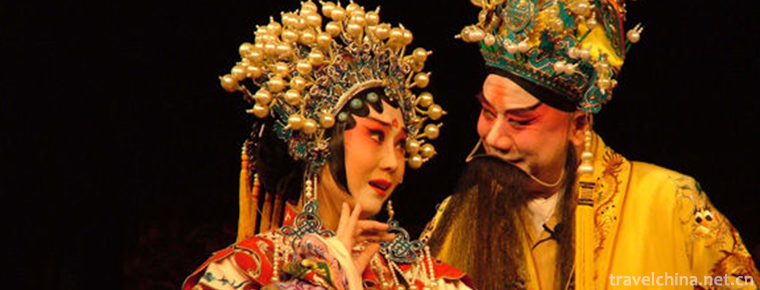
-
Three Water Lotus World
Foshan Sanshui lotus world is the largest lotus scenic spot in the world with the richest variety resources. It integrates architecture, sculpture, Dutch, mobile games, hotels and catering.
Views: 165 Time 2018-12-18 -
Baiyunshan National Forest Park Luoyang
Baiyunshan National Forest Park is located in the primitive forest area of Funiu Mountain in the southwest of Songxian County, Luoyang City, Henan Province, with a total area of 168 square kilometers.
Views: 190 Time 2019-02-06 -
Carrying a number
Handling trumpets is one of the trumpets of traditional folk songs. It is popular in many fields, such as manual workers, such as loading and unloading, lifting, pushing and pulling goods..
Views: 462 Time 2019-04-03 -
Buyi Peoples Changing Dance
The Bouyei people, who can sing and dance well, have created colorful Bouyei culture. Buyi people like singing and dancing to express their feelings whether they.
Views: 102 Time 2019-04-04 -
Heyang jumping drama
Heyang Dance Opera is a kind of local opera in Heyang County, Shaanxi Province. It belongs to the nature of social opera. When performing, there is no singing voice,.
Views: 369 Time 2019-05-02 -
Lingqiu Luoluo Tune
Lingqiu Luoluo Opera evolved from Yiyang Opera and flourished during Qianlong Period of Qing Dynasty. From the end of Qing Dynasty to the Republic of China, it gradually declined. Luoluo tune is sung .
Views: 370 Time 2019-05-13 -
Traditional Building Techniques of Wood Arch Bridge
The traditional construction techniques of Chinese wooden arch bridges mainly include site selection, abutment construction, level measurement, arch erection, upper scissors seedling, instant leg erec.
Views: 216 Time 2019-06-06 -
Puning Ying Song
Puning Yingge is a traditional folk dance style widely spread in Puning City, Guangdong Province. It was created and compiled by Yitang people during the reign of Qianlong in the Qing Dynasty. It has .
Views: 119 Time 2019-06-09 -
Yangasha
Yangasha, an epic originating in Jianhe, Guizhou Province, is eulogized for Miao compatriots from generation to generation. It is a sad and elegant love story about a passionate Miao girl. It is the G.
Views: 178 Time 2019-07-11 -
Silver jewelry making skills
Yunnan has been known as the "metal kingdom" since ancient times. Silver and copper resources in Western Yunnan are very rich, with Dali as a typical representative. Heqing Silver Ware Makin.
Views: 143 Time 2019-07-13 -
Deng Xiaoping
Deng Xiaoping (August 22, 1904 -1997 February 19th), formerly known as Deng Xiansheng, the scientific name of Deng Xixian, Guang'an, Sichuan. Go to Europe early Work study program After his return, he.
Views: 330 Time 2019-09-07 -
Corn and sparerib soup
Corn and spareribs soup is a tonic soup, the main ingredients are corn and spareribs, the main cooking technology is stew. Corn can reduce the blood cholesterol concentration and prevent it from depos.
Views: 329 Time 2020-03-16
